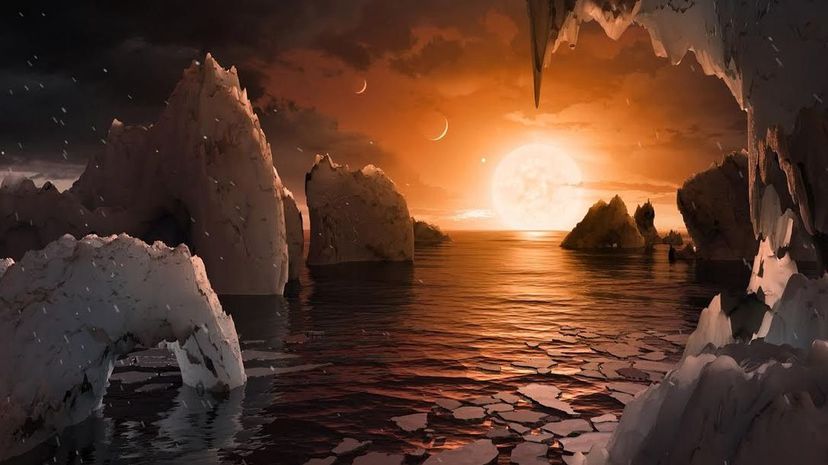
Before we go any further, NASA hasn't discovered alien life. The organization was kind enough to tweet as much before holding a live press event to talk about exoplanets.
In 2016, we saw a few notable press events about exoplanets. In May, scientists talked about how the Kepler telescope helped verify the existence of 1,284 exoplanets, more than doubling the number astronomers had previously discovered. And in November, European Southern Observatory representatives announced the discovery of Proxima b, a small planet in the Goldilocks zone of Proxima Centauri. That makes Proxima b the closest known exoplanet outside our solar system at just 4.25 light-years away.
Advertisement
The most recent press event focused on a system called TRAPPIST-1, which has not one, not two, but seven Earth-sized planets orbiting the same star. TRAPPIST-1 is a relatively tiny star, much smaller and cooler than our own sun. Three of the seven terrestrial planets orbit the star at the right distance to be within its habitable, or Goldilocks, zone. That's the region around a star in which an orbiting planet might have liquid water.
Scientists give planets names reflecting their distance from the host star. TRAPPIST-1b is the closest, with TRAPPIST-1h the farthest. The three planets within the habitable zone are TRAPPIST-1e through TRAPPIST-1g.

The planets are likely tidally locked to their host star, which means the same side of the planet faces the star throughout its planetary orbit. That makes it daytime on one side of the planet all the time and night on the other. Because the planets are close to the star, their orbital periods are short. The closest planet to the star has an orbital period of about 1.51 Earth days. The farthest one out has an orbital period of about 20 Earth days long.
The planets also are close to each other. They're so close that if you were to stand on the surface of one planet, the other nearby planets would appear to be about the same size as the moon seems to us here on Earth.
We haven't been able to directly look at the planets — the TRAPPIST system is too far away at more than 39 light-years. Scientists detected the planets by using powerful telescopes to measure tiny dips of light from TRAPPIST-1, indicating a planet transiting across the star. The amount of light blocked and the frequency of those interruptions gave us information about the size and orbital periods of the planets.
What are the next steps? NASA wants to use future telescopes, such as the James Webb Space Telescope, to search for signs of gases in the atmospheres of these planets. Knowing what, if any, gases are present on those planets would give us more clues as to whether the planets could support life. We might even discover evidence that life could exist on one or more of these planets already. So while NASA can't yet say we've found aliens, it's within the realm of possibility that we've stumbled across their home.
Advertisement

